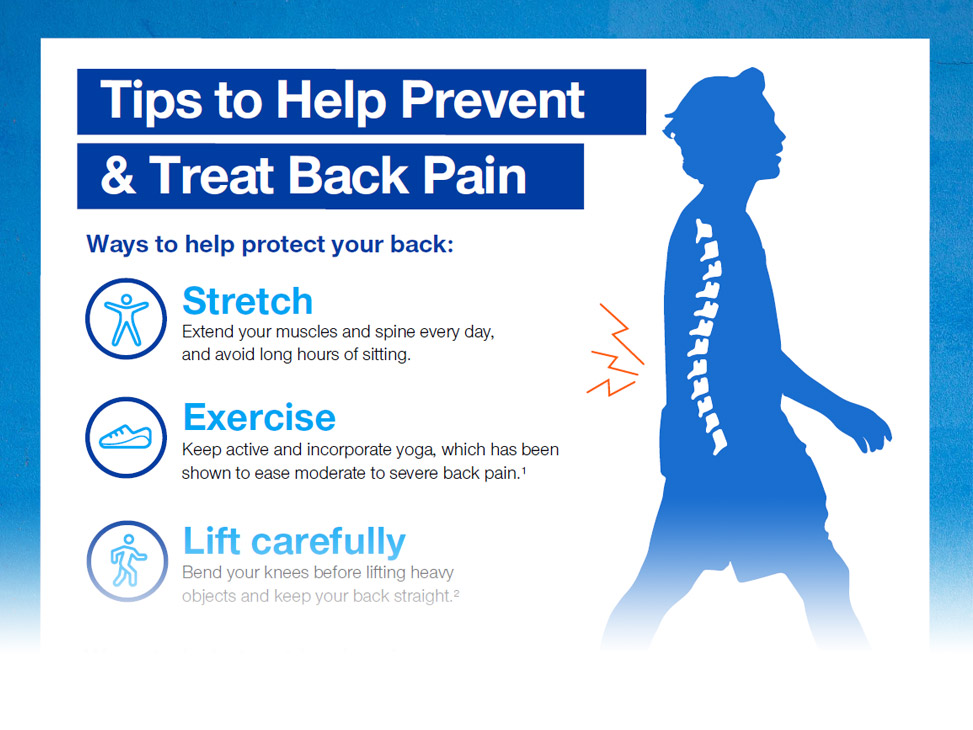UnitedHealthcare has introduced a new benefit for people with acute low back pain that makes it more affordable to access physical therapy and chiropractic care, helping to improve health outcomes, reduce costs and avoid often unnecessary invasive treatments and opioid prescriptions.
With this new benefit design, plan participants enrolled in certain employer-sponsored health plans can pay $0 out of pocket (waived deductible or copay) if they select physical therapy or chiropractic care for the treatment of low back pain, helping encourage people to choose these noninvasive options.*
Based on a UnitedHealthcare analysis, by 2021 this benefit design has the potential to reduce the number of spinal imaging tests by 22%, spinal surgeries by 21%, opioid use by 19%, and lower the total cost of care for eligible plan participants and employers.1
“This new benefit design may help encourage people with low back pain to get the right care at the right time and in the right setting, helping expand access to evidence-based and more affordable treatments,” said Anne Docimo, M.D., UnitedHealthcare chief medical officer. “With millions of Americans experiencing low back pain currently or at some point during their lifetimes, we believe this benefit design will help make a meaningful difference by improving health outcomes while reducing costs.”
The benefit covers, at no additional out-of-pocket cost, three physical therapy or chiropractic visits, along with additional visits normally covered under the plan, to a qualified care provider. This design helps make it more affordable for people with low back pain to obtain treatment from the over 75,000 chiropractors and physical therapists participating in UnitedHealthcare’s national care provider network.
The benefit design was informed by a recent study by OptumLabs and the Boston University School of Public Health that showed higher out-of-pocket costs made it less likely for patients with low back pain to choose clinically recommended noninvasive treatments, such as physical therapy and chiropractic care. For example, people with a copay of more than $30 were 29% less likely to see a physical therapist than patients whose copay was $0. There was a similar correlation between deductible and choice of physical therapy to treat low back pain, according to the study in The American Journal of Managed Care.
Nearly 70% of people experience low back pain at least once in their lifetime, and about one-quarter of adults in the United States report experiencing the condition in the past three months.2 3 Despite clinical recommendations against it, opioids are prescribed for nearly 9% of new low back pain cases, with this condition ranking as the most common reason for an opioid prescription.4
To treat low back pain, the American College of Physicians (ACP) recommends exercise and the use of non-pharmacologic and nonsurgical approaches including physical therapy, chiropractic care, acupuncture and nonsteroidal anti-inflammatory drugs.5 These noninvasive treatment options help 95% of people with low back pain recover after 12 weeks.6 Muscle relaxants and imaging, such as an X-ray or MRI, should be secondary options, and spinal surgery should be a last resort. Opioids should be avoided.5 However, certain "red-flag" symptoms, such as fever or loss of bladder and bowel control, may require immediate testing and intervention.7
This new UnitedHealthcare benefit change is available now for some new and renewing employers with fully insured plans and 51 or more employees in Connecticut, Florida, Georgia, New York** and North Carolina. Starting Jan.1, 2020, the benefit will be expanded to new and renewing employers with self-funded plans and organizations with two to 50 employees in the following states: Alabama, Arkansas, Florida, Georgia, Louisiana, Mississippi, North Carolina, South Carolina, Tennessee and Virginia. Broader expansion is planned throughout 2020 and 2021.
Eligible employers with fully insured plans that include coverage for physical therapy and chiropractic visits have this benefit at no additional cost.
More information about strategies that may help treat low back pain and this benefit is available here.
* Eligible plan participants must have remaining physical therapy or chiropractic visits under their plan; the new benefit design does not increase the maximum number of covered physical therapy or chiropractic visits per year.
** Benefit design available to employers with more than 101 employees.
About UnitedHealthcare
UnitedHealthcare is dedicated to helping people live healthier lives and making the health system work better for everyone by simplifying the health care experience, meeting consumer health and wellness needs, and sustaining trusted relationships with care providers. In the United States, UnitedHealthcare offers the full spectrum of health benefit programs for individuals, employers, and Medicare and Medicaid beneficiaries, and contracts directly with more than 1.3 million physicians and care professionals, and 6,500 hospitals and other care facilities nationwide. The company also provides health benefits and delivers care to people through owned and operated health care facilities in South America. UnitedHealthcare is one of the businesses of UnitedHealth Group (NYSE: UNH), a diversified health care company. For more information, visit UnitedHealthcare at www.uhc.com or follow @UHC on Twitter.
1 UnitedHealthcare modeling, 2019.
2 Kassebaum NJ, Arora M, Barber RM, et al. Global, regional, and national disability-adjusted life-years (DALYs) for 315 diseases and injuries and healthy life expectancy (HALE), 1990–2015: a systematic analysis for the Global Burden of Disease Study 2015. Lancet 2015;388:1603–1658.
3 Hoy D, March L, Brooks P, et al. The global burden of low back pain: estimates from the Global Burden of Disease 2010 study. Ann Rheum Dis. 2014; 73(6):968-74.
4 OptumLabs. 2018 Opioid KPI Metrics.
5 American College of Physician Guidelines. Noninvasive Treatments for Acute, Subacute, and Chronic Low Back Pain: A Clinical Practice Guideline from the American College of Physicians. http://annals.org/aim/fullarticle/2603228/noninvasive-treatments-acute-subacute-chronic-low-back-pain-clinical-practice. April 4, 2017.
6 Cleveland Clinic. Chronic Back Pain. https://my.clevelandclinic.org/health/diseases/16869-chronic-back-pain. Accessed July 2019.
7 Harvard Medical School, https://www.health.harvard.edu/pain/when-is-back-surgery-the-right-choice.add, 2014


Share This Story